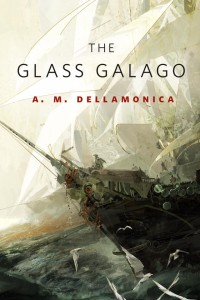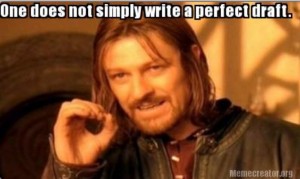 One of my online students asked today how novels get workshopped in the real world. It’s a question with several dimensions. It references novels as opposed to short stories, and also raises the issue of face to face workshops versus the online kind. The real heart of this question, it seems to me, is “How does a group workshop a bunch of works that are probably all over 75K words long?”
One of my online students asked today how novels get workshopped in the real world. It’s a question with several dimensions. It references novels as opposed to short stories, and also raises the issue of face to face workshops versus the online kind. The real heart of this question, it seems to me, is “How does a group workshop a bunch of works that are probably all over 75K words long?”
I’ll home in on that, but first let’s glance past the side issues:
ONLINE VERSUS FACE TO FACE: The logistics of finding like-minded novelists to work with make it probable that any novel workshop you do find will have an online component. Unless you live in a big city and know a fair number of other writers,the pool of people available to you will be so much bigger if you expand it to include, you know, the whole Internet.
Face to face workshops have an immediacy that e-mail can’t match, but this is perhaps beginning to be a moot point in the age of Google Hangouts and similar conferencing software. If you want to talk through a manuscript and your computer’s not ancient, you can meet in realtime. It’s really about what you want.
Both types of feedback–written and face to face–can be crucial to a project’s development as long as the critiques are good and the writer is ready to listen. Your mileage may vary, but I believe the magic is in the people, not the delivery system.
SHORT FICTION VERSUS NOVELS: Short fiction, in workshop terms, has an awesome advantage over novels. It’s short! My UCLA classes run ten weeks and can have as many as fifteen students. Even if each student came in with a slender tome, (say 50K words or 200 pages) a whole-novel workshop would be looking at reading 3000 pages of manuscript. That’s just reading, and doesn’t consider the feedback! I wrote 8,700 words of critique last week on nine short submissions, and that excludes follow-up discussion.
A usual strategy is to submit a manageable section of a novel instead. Everyone gets a more or less equal chance to show off part of their novel. This highlights the other advantage of a short fiction workshop–writers can submitting whole pieces. We can evaluate them from start to stop; all their cards are revealed. If someone says “I don’t like the decision Proto makes here,” you don’t find yourself crying in your beer because it all makes sense in the next chapter.
LOGISTICS OF WORKSHOPPING NOVELS
So, how do you workshop novels? There are probably a billion strategies, and I’m open to hearing them all, but here are the three main tactics:
–Workshopping an already finished novel in its entirety.
–Workshopping a finished novel in parts.
–Workshopping a WIP (work in progress) in parts.
WHOLE FINISHED BOOKS: If you have a book done, you can look for readers who have time and the inclination to read it all. This generally isn’t going to be a 15-person workshop, but rather a handful of trusted readers to whom you’re going to owe the same favor. And, unless you set a reading deadline and then convene a meeting (at your house, a convivial restaurant, or online) the feedback is likely to come in a one-on-one format, via e-mail. This is just as it would come from an agent or editor, which may have some useful features… but it doesn’t allow the ferment that comes from discussion, give and take, agree and disagree.
The obvious advantage here is that the work is critiqued as a piece. You get feedback on the whole thing. Your set-up, character arcs, and whether you stuck the ending can all be evaluated, because–as with a short story–the readers have everything they need.
The possible downside is that you’re going to get one take from each reader… you’re hardly going to ask them to take a second run at the rewrite in six months’ time!
Getting a finished novel read after it’s drafted keeps the critique process from sabotaging your momentum, though, or tempting you to stray from the path you’ve set for the story. This is crucial for many writers. Then again, if you do conclude from the feedback on the early chapters that you’ve taken your characters in a bad direction, there’s that much more to rewrite if the other 450 pages have already been put to bed.
FINISHED BOOKS, IN PIECES: This may, for some, offer the best of both worlds. It assumes you have access to or can build a workshop with some kind of rotating roster, and you submit pieces of the completed draft of your book, in order, at regular intervals. You get feedback on Chapters 1-3, for example, and as you rewrite them you turn in Chapters 4-6. All the while, you’re reading and critiquing works by your peers.
The possible disadvantages here are that this sort of thing requires a certain amount of organizational discipline from the workshop, a group that sticks to its commitments and its schedule.It might also take longer than you’d like. People inevitably forget major chunks of chapters 1-3 by the time they reach 9-12. However, it may represent a lighter workload for a larger group–thus garnering more feedback– and be more generally do-able.
UNFINISHED BOOK AS YOU GO: This is the mode for most of the novel writing courses I teach at the UCLA Extension Writers’ Program, and it has a lot going for it. Writers get an immediate sense of what people like about the book, and a chance to rethink the elements that aren’t working before those elements get embedded too deeply into the book’s structure. Everyone is drafting madly, so the emphasis can be on big picture stuff rather than the fine details of prose and polish. And if you get someone on board with a story element they weren’t buying in an earlier round of critique, you know you’ve addressed a problem. That can be a great feeling.
A chief drawback with this kind of critique process is that sometimes the drafting stage of a book is a delicate time, and too much feedback during this early exploration of a story can disrupt a writer’s momentum, causing them to go back and rewrite their beginning over and over, or to abandon the project entirely.
Novels are big investments of time and emotion, and as such they come with big risks. Figuring out how to get decent feedback for yourself and for a particular project, at any given time, can be a genuinely tricky business. This post is long because it’s a complex question with no single right answer.
The best advice I can give you, therefore, is to get to know other writers who are in the same stage of artistic development as yourself. When you meet someone in a class or at a con who really gets your work, bend over backwards to give them amazing feedback on theirs, and work to stay connected. As you build a network of writers you trust and admire, your resources for structuring a workshop you can use will increase.








